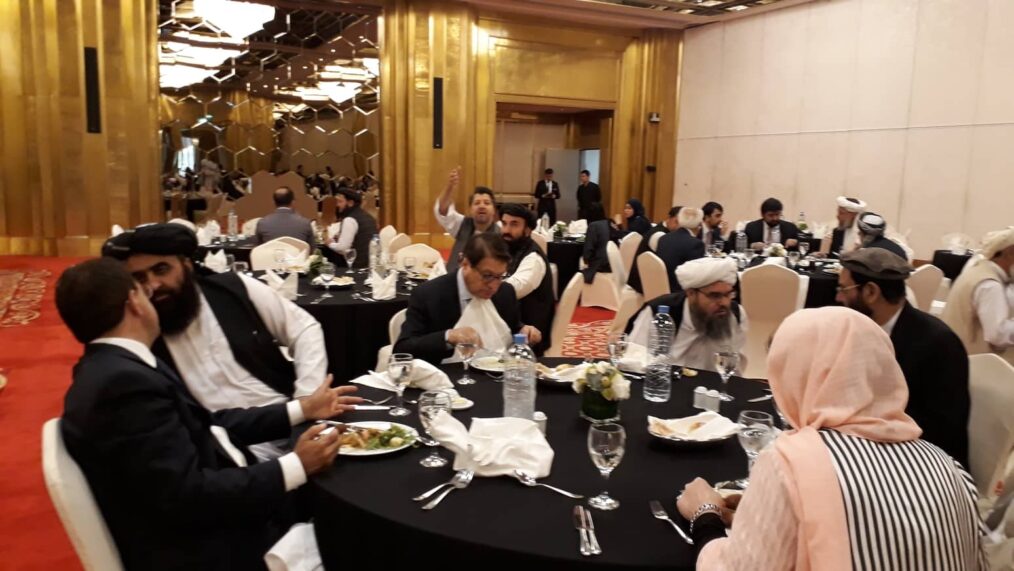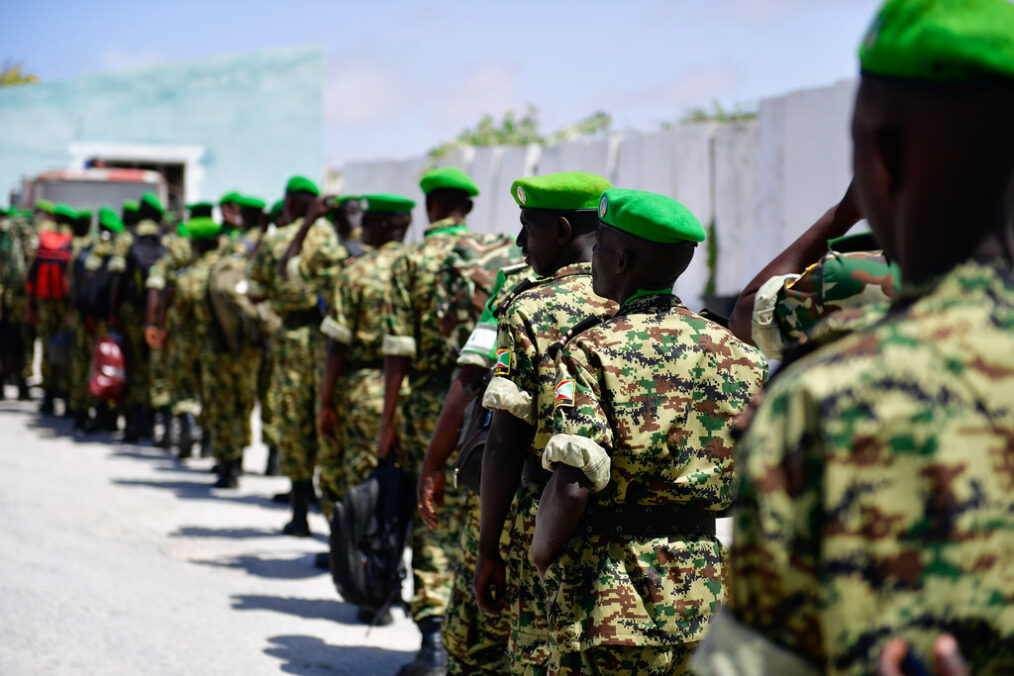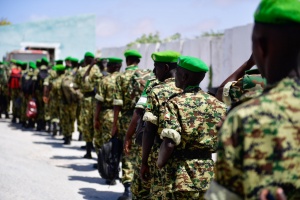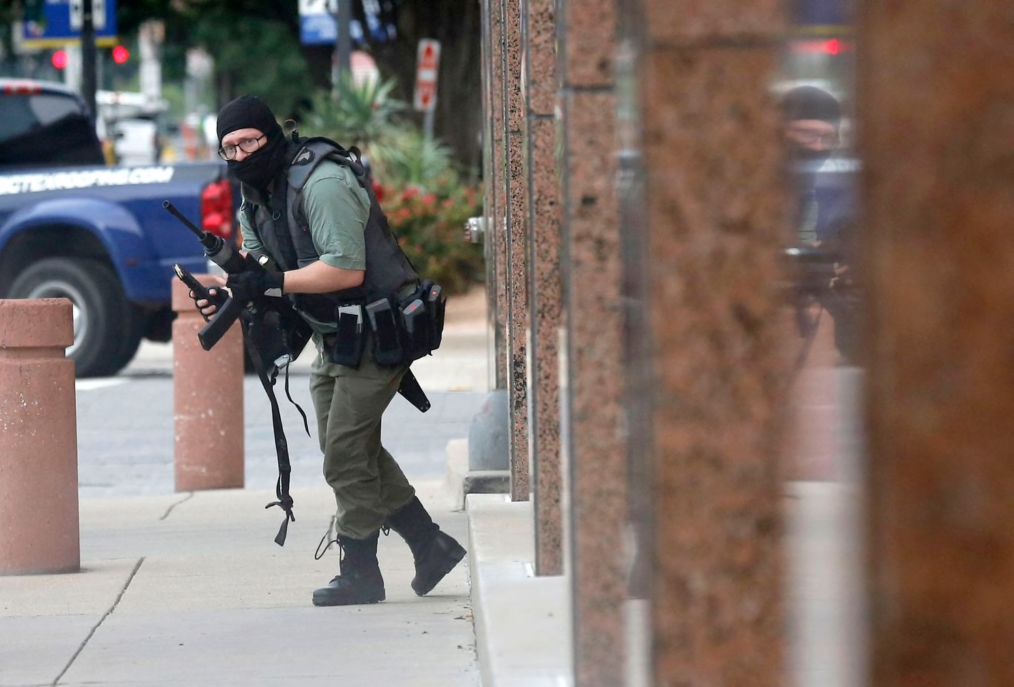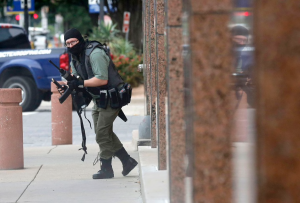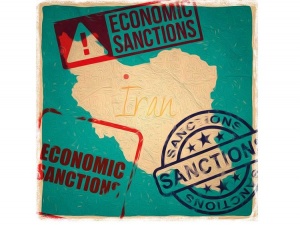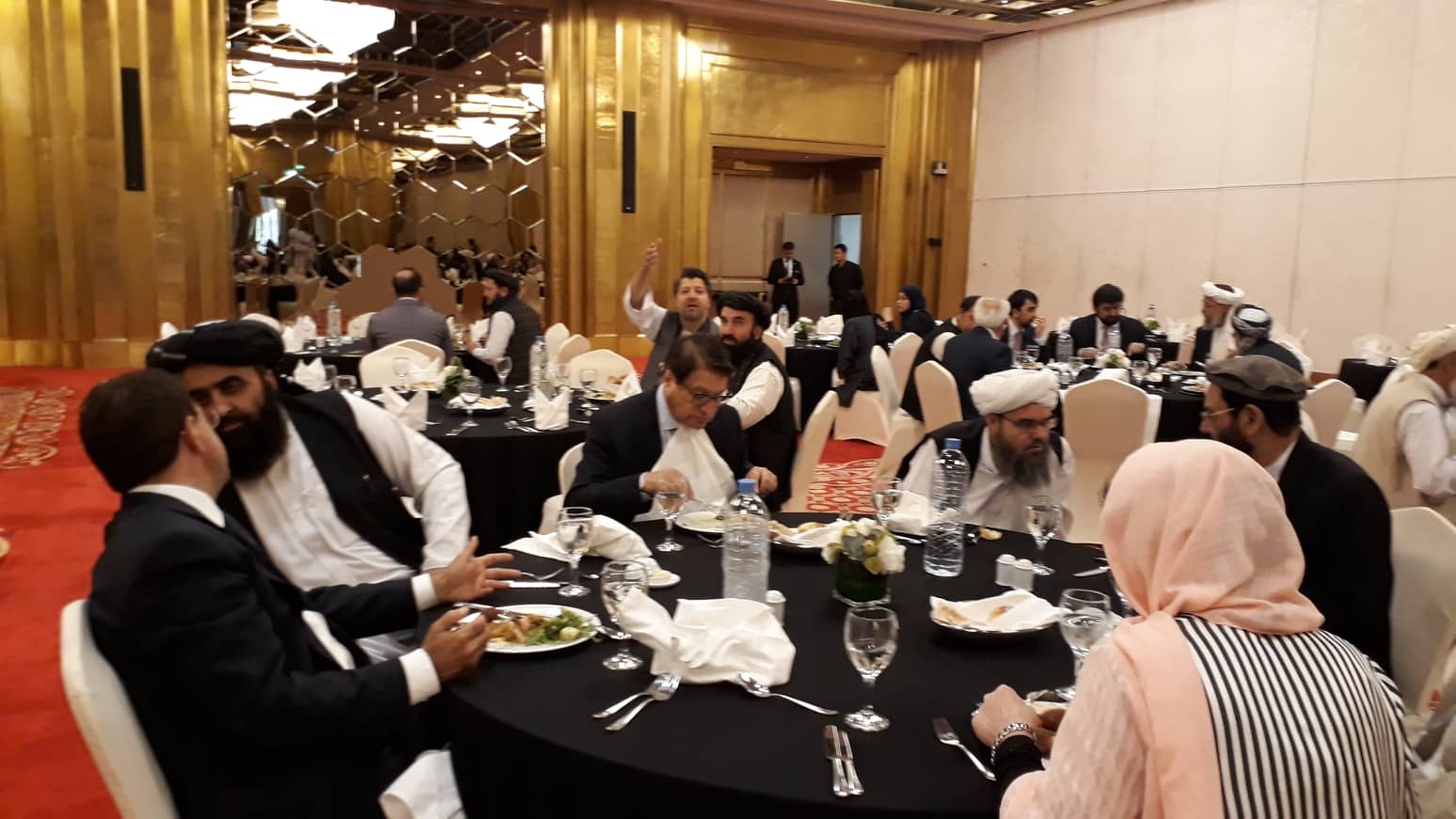
Fawzia Koofi, a women’s rights activist and politician is eating lunch with members of the Taliban delegate at Doha peace conference. July 7, 2019. Image: Rise to Peace
Under Taliban rule (1996-2001), Afghan women were banned from attending schools and working as well. In addition to violating their civil and political rights, the Taliban has threatened women lives. Since the fall of the Taliban, women have feared that negotiating for a peace agreement with the Taliban meant giving up some of their rights in exchange for the chance to end the war.
In 2015, the Afghan government created a National Action Plan (NAP) that was developed to address the challenges women have faced in the areas of participation, protection, prevention, relief, and recovery.
As a result of the NAP, women have the chance to attend school and to participate in political and economic opportunities.
Women want to participate in the Afghanistan peace process.
Of 23 rounds of talks between 2005 and 2014, there were only two occasions where women were present at the table. Moreover, there has only been one minister in the Afghan government that was a woman. Women have gained the right to participate politically, but what good does that do when women’s roles aren’t addressed in the government/local sector?
There are a few ways outside of the government in which Afghan women make contributions to address violence and equality throughout the country.
Female electoral candidates work to provide a voice for uneducated women.
For example, female members of peace councils try to negotiate with insurgent leaders. By doing so, they are working to reassure their support for reintegration of Taliban fighters into the community.
Women also encourage local fighters to participate in talks within the community to address current extremist narratives.
Involving women in the peace process could only benefit the affair. In the past, the female-led peace councils have gathered with the wives of fighters to facilitate the release of hostages, which has been successful.
Building relationships and trust with allies could lead to a negotiation between the two parties. Given the violent history towards women, it is hard to contribute to the peace movement since it’s predominantly male-led.
Wazhma Frogh is the Cofounder of the Research Institute for Women, Peace, and Security and is one of the brave women in Afghanistan. She briefed the United Nations Security Council (UNSC) on various recommendations to improve the involvement of women in the peace process.
Her advocacy included topics such as delegating a specific institution to oversee the NAP to ensure proper inclusion and implementation, allowing more women to participate in peace talks, and encouraging women to participate in the policing and security sector.
Integrating women into the political realm in a country where women have long suffered inequality could take some time to incorporate fully.
Therefore, the Afghan government should consider making small changes that further women’s participation. For instance, the government should consider including a particular amount of females in peace talks. One or two women would be better than none at all.
The government should also include women in law enforcement and security. Since local female political leaders move to represent the underrepresented women, this will provide women with more opportunities for leadership and capacity building in an area that most women fear.
This could give women the confidence they need to understand political matters in a way where they can then network in domains where men cannot.
Afghani women today are not only moving to become more equal but wanting to partake in a way that allows them to help the entire country to progress from war. Including women in the peace process empowers them to build trust and rapport with both local communities and the government.

